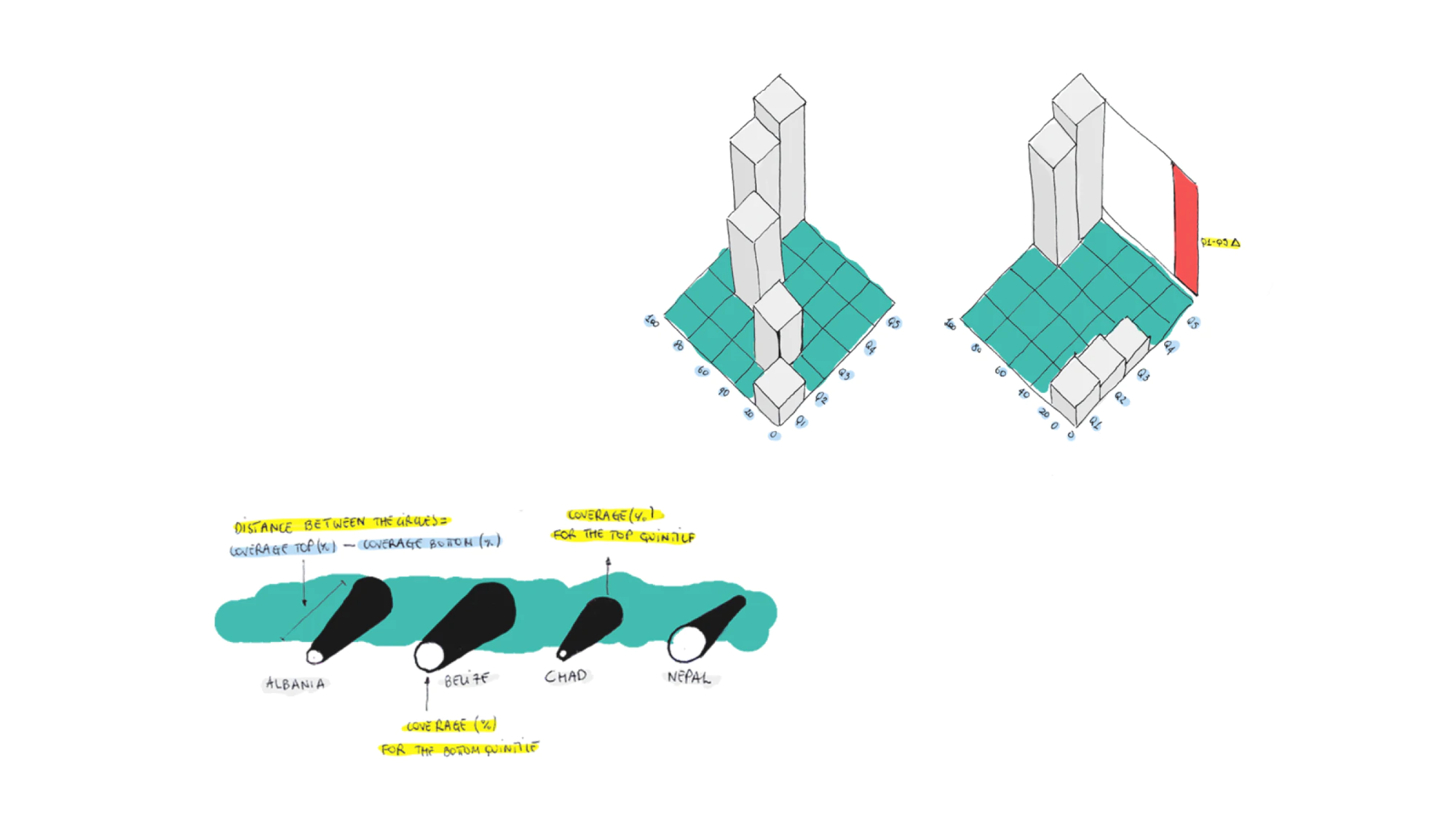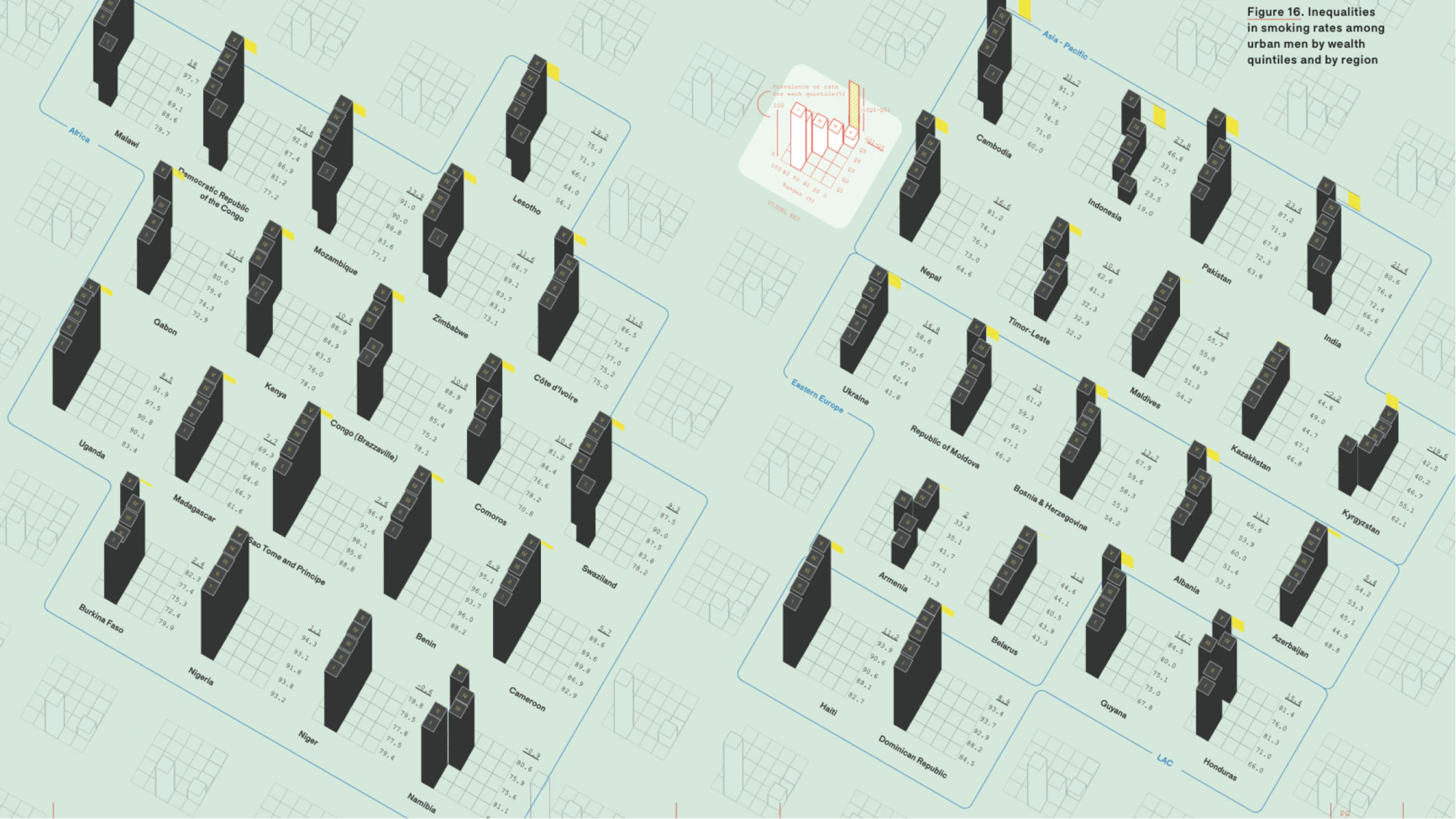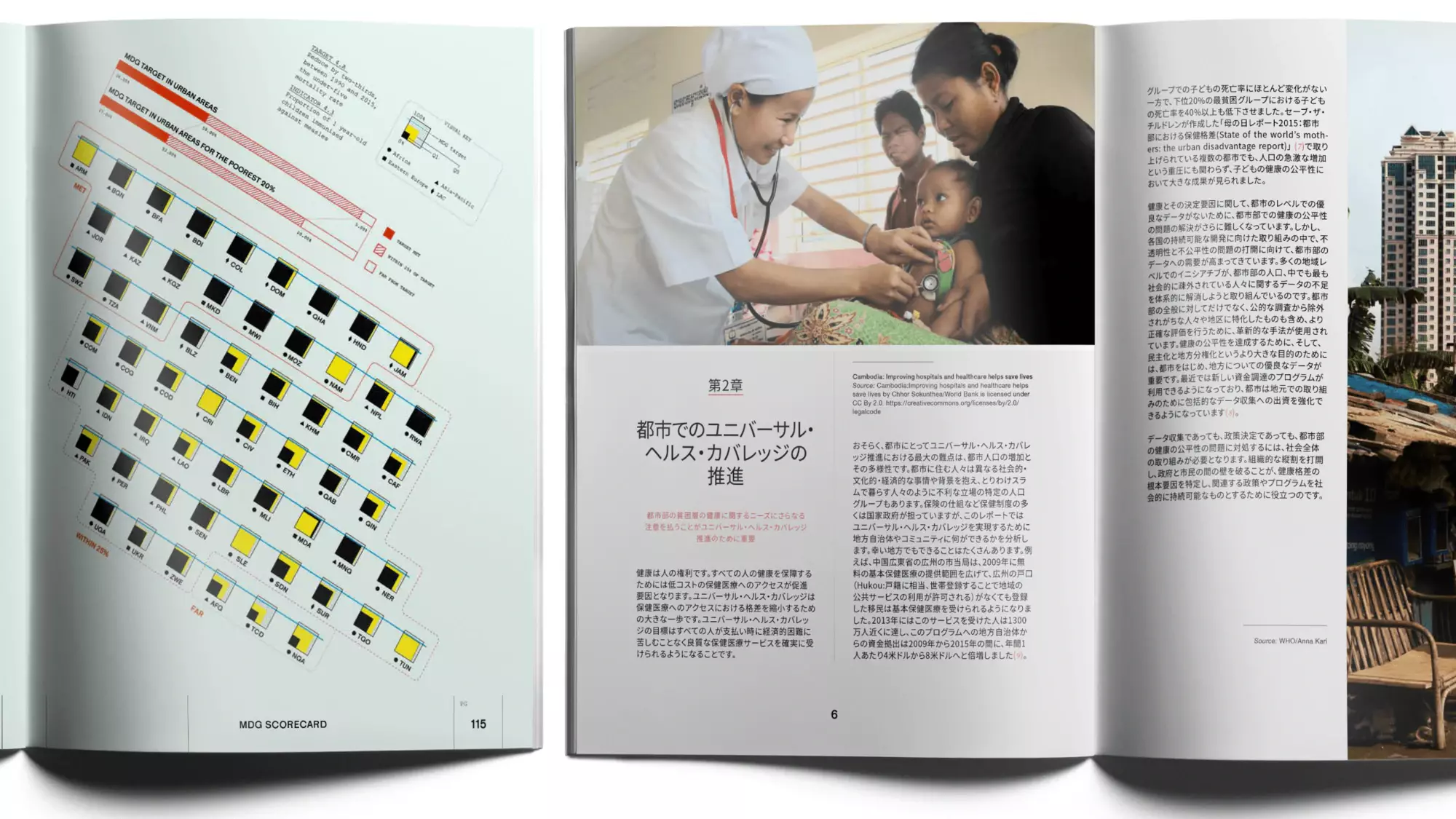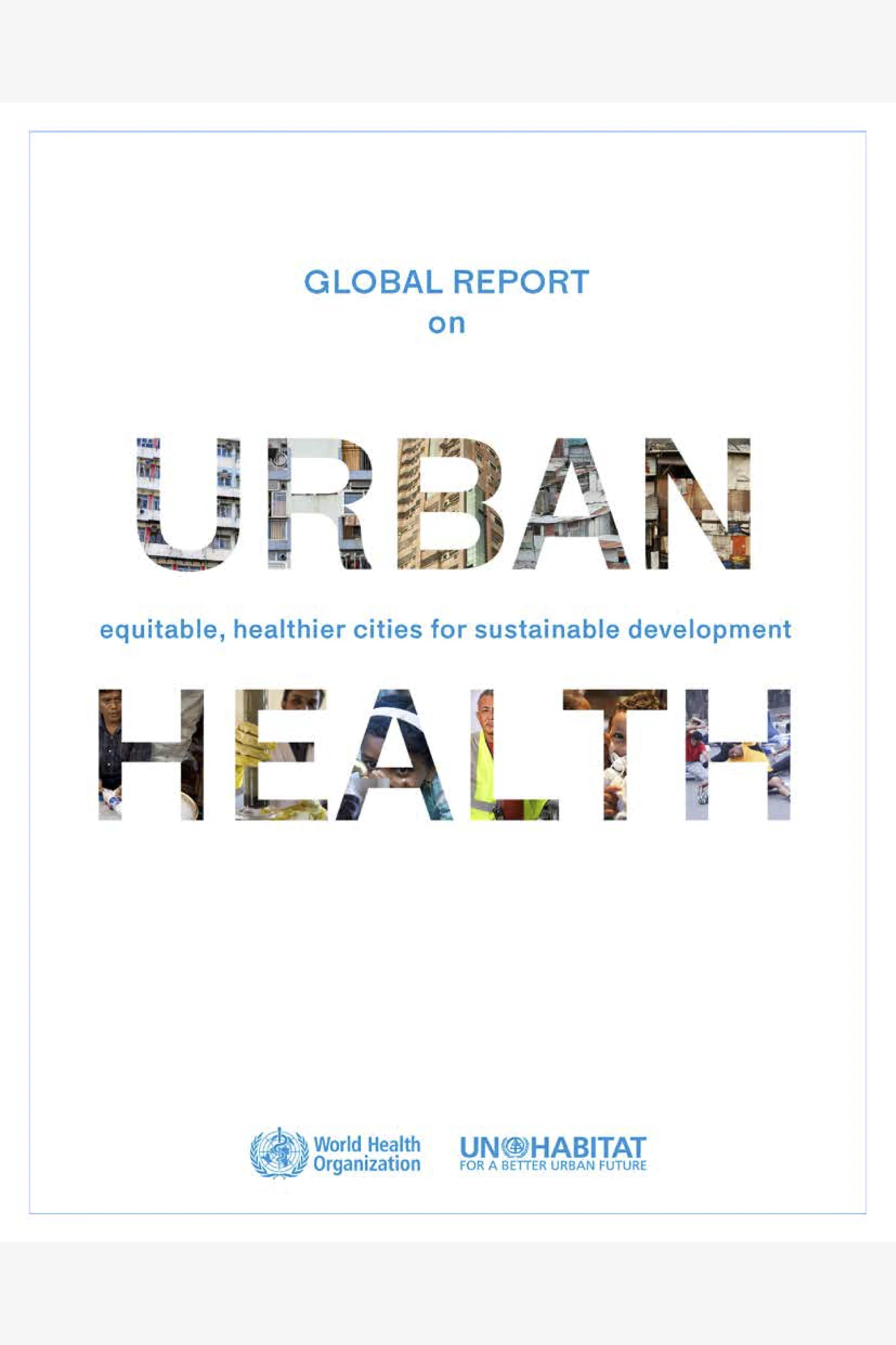
WHO's Global Report on Urban Health
The World Health Organization and UN–Habitat’s joint report, “Hidden Cities: Unmasking and Overcoming Health Inequities in Urban Settings” was released in 2010. Five years later, technology was rapidly transforming how people consumed content, and important research risked falling through the cracks. Representatives asked Accurat for help in modernizing the report's information design and adapting it for digital formats.






